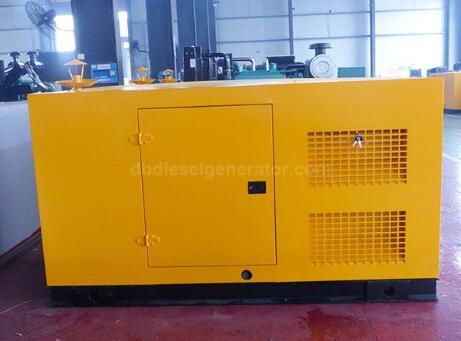Canopy gensets are a reliable source of power in various settings, from construction sites to residential areas. Understanding how these generators work can help users operate them more efficiently and maintain them properly. This article explains the working mechanism of canopy gensets, their components, and their operational benefits.
Basic Working Principle
A canopy genset operates on the same fundamental principles as other generators, converting mechanical energy into electrical energy. This process involves several key steps:
Engine Operation
The heart of a canopy genset is its internal combustion engine, which runs on fuel such as diesel, gasoline, or natural gas. When the engine starts, it burns the fuel in the combustion chamber, creating a high-pressure gas. This gas forces the pistons to move, converting chemical energy from the fuel into mechanical energy.
Alternator Function
The mechanical energy produced by the engine is transferred to the alternator through a connected shaft. The alternator consists of a rotor and a stator. As the rotor spins inside the stator, it generates a magnetic field, inducing an electric current in the stator windings. This process converts the mechanical energy into electrical energy.
Voltage Regulation
The generated electrical energy needs to be stable and consistent for practical use. A voltage regulator is employed to control the output voltage of the generator. It ensures that the electricity produced is at the correct voltage level, protecting connected devices from voltage fluctuations.
Components of a Canopy Genset
Several key components work together to ensure the efficient operation of a canopy genset.
Engine
The engine is the primary power source, driving the entire system. It can be powered by various fuels, with diesel engines being particularly common due to their efficiency and durability.
Alternator
The alternator is responsible for converting mechanical energy into electrical energy. Its design and quality are crucial for the overall performance and reliability of the genset.
Fuel System
The fuel system includes a fuel tank, fuel pump, and fuel injectors. It stores and supplies fuel to the engine in a controlled manner to maintain consistent power generation.
Cooling System
The cooling system prevents the engine from overheating. It typically includes a radiator, coolant, and fans that dissipate heat generated during operation.
Exhaust System
The exhaust system channels away the combustion gases produced by the engine. It includes components such as the exhaust manifold and muffler, which help reduce noise and emissions.
Control Panel
The control panel is the interface for operating the genset. It allows users to start and stop the generator, monitor its performance, and manage settings such as voltage and frequency.
Operational Benefits
Canopy gensets offer several operational benefits that make them a popular choice for various applications.
Noise Reduction
The canopy enclosure significantly reduces noise levels, making the genset suitable for use in noise-sensitive environments. This feature is particularly beneficial in residential areas and events where minimal disruption is essential.
Weather Protection
The robust canopy protects the genset from adverse weather conditions, ensuring reliable operation in rain, snow, and extreme heat. This protection enhances the longevity and durability of the generator.
Portability
Canopy gensets are designed for easy transportation and setup. Their compact and enclosed design allows them to be moved quickly and efficiently, providing power wherever it is needed.
Maintenance and Reliability
Regular maintenance is essential for the reliable operation of canopy gensets. This includes routine checks of the fuel system, cooling system, and electrical components. Periodic servicing by qualified technicians helps identify and address potential issues before they lead to significant problems.
Selecting the right canopy genset supplier is crucial to ensure you receive a high-quality product and comprehensive support. Look for a supplier with a strong reputation and extensive experience in the industry. If you have any questions or need assistance in choosing the best canopy genset for your application, don't hesitate to contact us. A reliable supplier will help you find the perfect solution to meet your power needs and provide the necessary information for proper operation and maintenance.

Comments
Post a Comment